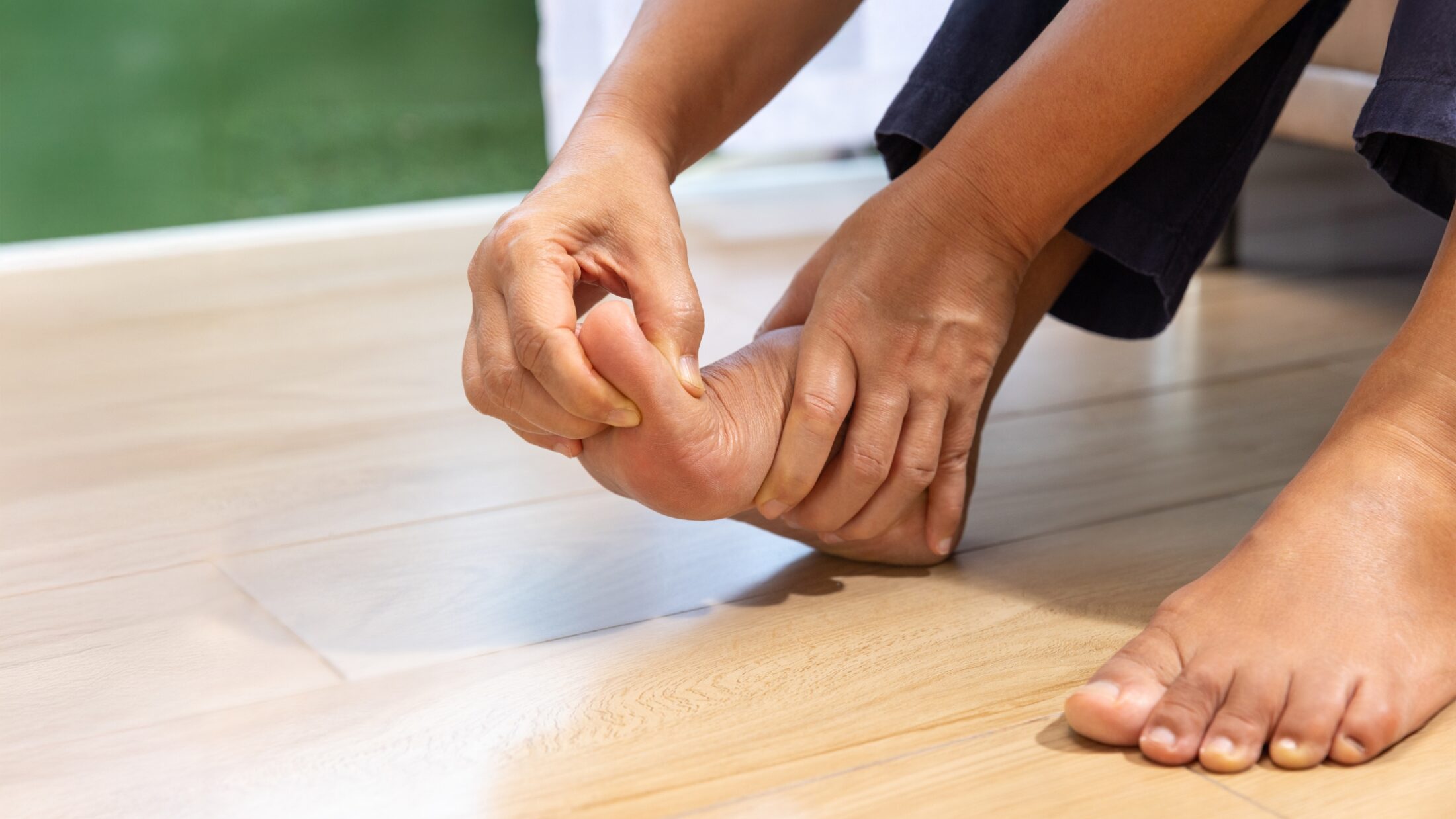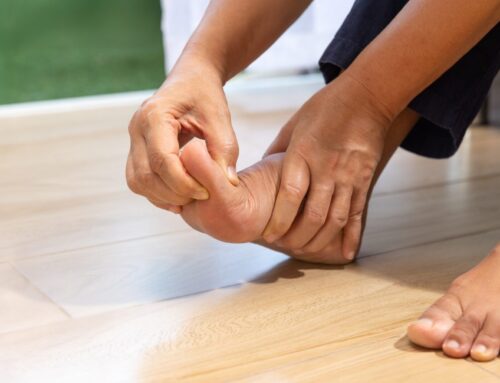Maybe you’re heading off on a long-awaited vacation, visiting loved ones, or travelling for an important work commitment. But spending hours in the same position on a plane, train, or in a car can quietly raise your risk of developing blood clots, especially in the legs.
A blood clot forms when blood thickens and clumps together. Although clots can develop in many parts of the body, they’re particularly concerning when they occur in the deep veins of the legs, a condition called deep vein thrombosis (DVT). Sitting still for long periods slows your circulation, making it easier for a clot to form. In rare cases, a clot can break loose and travel to the lungs, causing a life-threatening condition known as a pulmonary embolism.
By adopting a few simple habits and making thoughtful choices during your trip, you can support healthy circulation, keep your legs comfortable, and arrive ready to enjoy your destination.
Why Travel Can Put Your Circulation on Pause
A blood clot is essentially a small, semi-solid mass of blood cells and fibrin (a protein involved in clotting) that forms to stop bleeding when we get injured. This is a normal and important process for healing cuts and scrapes. However, when a clot forms inside a deep vein without an injury, most often in the lower leg or thigh, it’s called deep vein thrombosis (DVT).
DVT is a concern because the clot can partially or completely block blood flow in the vein, causing swelling, pain, or warmth in the leg. In some cases, part of the clot can break free and travel to the lungs, leading to a pulmonary embolism, which is a serious and potentially life-threatening emergency.
What does this have to do with travel?
When you’re sitting still for long stretches (a flight, train ride, or road trip), your leg muscles aren’t contracting as much. This lack of movement slows circulation, giving blood more opportunity to pool and potentially form clots.
Other travel-related factors can also add to the risk:
-
Immobility
Staying in the same position for hours makes it harder for blood to return to the heart. -
Dehydration
Common when travelling, especially by air, and can make blood thicker. -
Cabin Pressure Changes
Reduced oxygen and lower cabin pressure during flights can subtly affect circulation. -
Personal Risk Factors
Age over 60, smoking, pregnancy, recent surgery, certain medical conditions (like clotting disorders or heart disease), and hormone therapy can all increase susceptibility.
Recognizing the Warning Signs
Most of the time, travel goes smoothly and you arrive without any issues. But it’s important to know the signs of a potential blood clot so you can act quickly if something feels off.
One of the most common symptoms is swelling in one leg, especially in the calf area. This swelling may appear suddenly and can be accompanied by pain, tenderness, or cramping that doesn’t seem to have another explanation. You might also notice the skin feeling warm to the touch or looking slightly red or discoloured compared to the other leg.
These symptoms don’t always mean you have a blood clot, but they’re important red flags, especially if they develop during or after a long journey.
Seek immediate medical attention if you:
-
Experience sudden shortness of breath
-
Feel chest pain that worsens when you breathe deeply
-
Notice rapid heartbeat, dizziness, or coughing up blood
These can be signs of a pulmonary embolism, a medical emergency that happens when a clot travels to the lungs. Quick treatment can be lifesaving, so never ignore symptoms or “wait and see” if you suspect something is wrong.
Ways to Keep Your Blood Flowing
The best defence against travel-related blood clots is to keep your circulation moving. With a few mindful habits, you can protect your leg health without sacrificing comfort during your journey.
Move and Stretch Regularly
Your muscles act like a natural pump for your veins, helping blood return to the heart. Try to stand up every one to two hours, even if it’s just for a short walk down the aisle of a plane or a quick stretch at a rest stop. While seated, do simple movements like ankle circles or calf raises to keep blood flowing.
Wear Compression Stockings
Compression stockings gently squeeze your legs, helping veins move blood more efficiently. They’re especially useful on long trips, where sitting still is unavoidable. For most healthy travellers, a 15–20 mmHg compression level is a good starting point, but those with medical conditions should check with a healthcare provider for the right fit and strength.
Stay Hydrated
Dehydration can thicken your blood, making clots more likely. Aim to drink water before and during your trip, and try to limit alcohol and caffeine, which can contribute to fluid loss. Keep a refillable water bottle handy so you can sip often.
Maintain Good Posture
How you sit matters. Avoid crossing your legs for long periods, which can restrict blood flow. Instead, keep your feet flat and your knees slightly bent, giving your veins the best chance to do their job.
Dress Comfortably
Tight waistbands or restrictive clothing can interfere with circulation. Choose loose, breathable fabrics that let you move freely and stay comfortable for hours on end.
Smart Health Steps Before You Set Off
A little preparation before you travel can go a long way in keeping you safe, especially if you know you’re at higher risk for blood clots.
If you’ve had a blood clot in the past or have known risk factors, it’s wise to talk to your doctor before your trip. They can assess your personal situation and recommend extra precautions. For some high-risk travellers, this might include a short course of prescribed blood thinners or other preventive measures to lower the chance of clot formation.
It’s also worth taking a few minutes to review your travel insurance. Make sure it covers emergency medical care in your destination, including treatment for conditions like deep vein thrombosis or pulmonary embolism. While it’s unlikely you’ll need it, having the right coverage can give you peace of mind, and help you act quickly if a problem arises.
Preparing Your Prevention Plan for Your Trip
The way you travel can shape how you protect yourself from blood clots. While the basic principles stay the same, keep moving, stay hydrated, and support your circulation, each mode of transport comes with its own opportunities to put those habits into action.
Flights
Air travel often means long hours in a confined seat. If possible, choose an aisle seat so it’s easier to get up and move around without disturbing others. Take advantage of layovers to walk through the terminal rather than sitting at the gate. During the flight, aim to do simple in-seat exercises (ankle circles, knee lifts, or calf raises) to keep blood moving even when you can’t stand.
Road Trips
When you’re behind the wheel or riding as a passenger, it’s easy to focus on the destination and skip breaks. Instead, plan rest stops every one to two hours. Use the time to stretch, walk around, and loosen tight muscles. If you’re a passenger, do light foot and ankle movements while seated to maintain circulation.
Train or Bus Travel
Long-distance trains and buses can still keep you sitting for extended periods, but they usually offer more space to move than a plane. Whenever it’s safe, get up and walk the aisle or move through the carriages. Even while seated, keep your legs stretched out when you can, and avoid tucking your feet under the seat in front of you.
Looking After Yourself Once You’re Home
Your risk of travel-related blood clots doesn’t end the moment you arrive. In fact, symptoms of deep vein thrombosis (DVT) can develop days, or even weeks, after a long journey. That’s why it’s important to stay aware of how your body feels once you’ve settled in.
Keep an eye out for unexplained swelling in one leg, especially if it’s paired with pain, tenderness, warmth, or a change in skin colour. These signs can appear gradually or quite suddenly. Even if you feel fine overall, don’t ignore any changes in your legs.
If you notice shortness of breath, chest pain, a rapid heartbeat, or coughing up blood, seek emergency medical help right away, these can be symptoms of a pulmonary embolism, which needs immediate treatment.
It’s always better to be cautious. Contact your healthcare provider promptly if you have any concerns in the days following travel, especially if you have a history of blood clots or other risk factors. Quick action can make all the difference in protecting your health after your trip.
Staying Healthy on the Road and in the Air
For most people, travelling, whether for adventure, work, or family, can be enjoyed without worry. By staying aware of the risks and taking simple, consistent precautions, you greatly reduce your chances of developing a blood clot. A few small actions, like moving regularly, staying hydrated, and supporting your circulation, can make a big difference in your comfort and safety.
These habits aren’t about being fearful, they’re about travelling smarter. You can still relax, enjoy your trip, and focus on the experiences that matter most, knowing you’ve taken steps to protect your health.
If you’ve found certain strategies that work well for you, consider sharing your tips or experiences with others. The more we talk about safe travel habits, the more we can help friends, family, and fellow travellers arrive healthy and ready to enjoy their journey.
Book a professional compression garment fitting with Care-Med and get the right support customized for your needs. Our certified fitters will ensure a perfect fit for your travels.
Share This Story, Choose Your Platform!
Table of Contents
- How to Prevent Blood Clots When Travelling
- Why Travel Can Put Your Circulation on Pause
- Recognizing the Warning Signs
- Ways to Keep Your Blood Flowing
- Smart Health Steps Before You Set Off
- Preparing Your Prevention Plan for Your Trip
- Looking After Yourself Once You’re Home
- Staying Healthy on the Road and in the Air
We specialize in orthotics, body braces, and compression wear tailored to your unique needs in Toronto. Reach out to us at info@caremed.care or call 416-782-5353 to book your fitting and consultation.
Experience the difference of customized solutions designed just for you.











